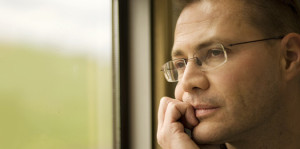
‘Drunkorexia,’ is a dangerous phenomenon that not only poses serious and life-threatening health threats, but also significantly increases an individual’s risk of experiencing alcohol-related injuries and assault.
Twenty-one-year-old Amy has plans to go out drinking with her friends on Friday night. Amy plans to drink quite a few, but she worries about gaining weight from all the calories she’ll be drinking, so she decides to skip food on Friday in preparation for her boozy night out. She’s even scheduled a few extra workout sessions at the gym to further offset the drinks she’ll be consuming.
While Amy is a made-up character, her behaviors around drinking are not. In fact, research shows that over 80 percent of young drinkers engage in disordered eating and restriction prior to drinking [1].
What is Drunkorexia?
Drunkorexia is a non-medical term describing individuals who restrict their food intake and/or engage in compensatory behaviors (purging, excessive exercise, etc.) to offset the calories consumed in alcoholic beverages. In other words, you eat less so you can drink more.
Drunkorexia essentially combines alcohol abuse with eating disorder behaviors, making for a disastrous (and potentially deadly) combo. And while drunkorexia is not officially recognized as an eating disorder or alcohol abuse disorder, both mental healthcare and eating disorder communities widely recognize drunkorexia as a dangerous behavior deserving of treatment.
Drunkorexia is most prevalent among college-aged females, with one Australian study finding 82.7 percent of surveyed female university students engaged in drunkorexia behaviors in the past three months [2].
The same study revealed over 28 percent of female university students regularly and intentionally skipped meals and engaged in purging or exercise to make up for the calories consumed from alcohol. Another study found that more than half of French and American college students show symptoms of drunkorexia [3].
While males can and do engage in drunkorexia behaviors, studies show that college women are over 1.5 times more likely to restrict food intake before drinking alcohol than men are [4].
Further, while research reveals women are motivated to restrict their food calories prior to drinking in order to prevent weight gain, most men who engage in drunkorexia behaviors do so to speed up the intoxicating effects of alcohol [5].
In short, experts agree that drunkorexia seems to overwhelmingly stem from the conflicting social pressures placed on college women to get drunk and remain thin [6].
The Dangers
 Drinking at college (especially binge drinking) has become a tradition many students view as an important part of their campus experience. A 2014 national survey found that 60 percent of college students aged 18-22 drank in the past month while 2 out of 3 of the 60 percent had engaged in binge drinking during that time [7].
Drinking at college (especially binge drinking) has become a tradition many students view as an important part of their campus experience. A 2014 national survey found that 60 percent of college students aged 18-22 drank in the past month while 2 out of 3 of the 60 percent had engaged in binge drinking during that time [7].
Binge drinking is defined as a drinking episode that brings blood alcohol concentration levels to 0.08 g/dL, typically occurring after four drinks for women and five drinks for men in a two-hour period.
Unfortunately, college drinking comes with serious consequences:
- Nearly 2,000 college students aged 18-24 die every year from alcohol-related injuries [8].
- Around 700,000 students aged 18-24 are assaulted by a student who was drinking [9].
- Approximately 97,000 students between the ages of 18-24 experience alcohol-related date rape or sexual assault each year [10].
- 1 in 4 college students experiences academic problems from drinking (falling behind in class, getting lower grades, missing class, etc.) [11].
- Other common consequences of drinking at college include health problems, unprotected sex, suicide attempts, injuries, drunk driving, and problems with the police [12].
While alcohol consumption in general poses serious health risks, combining it with drunkorexia (disordered eating, restriction, and purging) significantly increases the risk of both physical and psychological problems. Some of the most common dangers associated with drinking on an empty stomach include the following:
- Hypoglycemia
- Nutritional deficiencies
- Blackouts
- Cirrhosis
- Brain damage
- Heart problems
- Memory lapses
- Increased risk of developing alcoholism
- Depression
When you skip a meal or multiple meals in preparation for a later drinking episode, you’re depriving your body of the nutrients it needs to function and survive. Over time, this practice of restricting food calories prior to drinking can lead to severe malnutrition, dehydration, and vitamin depletion (because even though alcohol may have calories, they’re empty ones, so your body is still starving for essential nutrients).
In addition, drinking on an empty stomach can cause you to get drunk much faster than you normally would, thereby increasing your likelihood of numerous health problems, including alcohol poisoning.
Further, one study found that women who restricted their caloric intake before drinking were more likely to engage in unprotected sex, more likely to experience drinking-related memory loss, and were at an increased risk of being sexually assaulted or injured [13]. On the flip side, men who restricted their food intake before drinking engaged in greater physical aggression [14].
If you think you or a loved one may be engaging in drunkorexia behaviors, seek professional help right away. While you may start by talking to your doctor, therapist, or someone else you trust, it is best to eventually seek treatment from a specialist experienced in both alcohol use and eating disorder issues. Though highly treatable, drunkorexia can cause serious and life-threatening issues, so don’t hesitate to seek help today.
References:
[1] ScienceDaily. (2016, June 27). Drunkorexia 101: Increasing Alcohol’s Effects Through Diet and Exercise Behaviors. ScienceDaily. https://www.sciencedaily.com/releases/2016/06/160627100223.htm.
[2] ScienceDaily. (2020, May 15). Binge drinkers beware, Drunkorexia is calling. ScienceDaily. https://www.sciencedaily.com/releases/2020/05/200515103916.htm.
[3] Choquette, E. M., Ordaz, D. L., Melioli, T., Delage, B., Chabrol, H., Rodgers, R., & Thompson, J. K. (2018, September 13). Food and Alcohol Disturbance (FAD) in the U.S. and France: Nationality and gender effects and relations to drive for thinness and alcohol use. Eating Behaviors. https://www.sciencedirect.com/science/article/abs/pii/S1471015318301223.
[4] Lauren Muhlheim, P. D. When College Drinking and Disordered Eating Collide: Drunkorexia. Verywell Mind. https://www.verywellmind.com/college-drinking-and-disordered-eating-drunkorexia-4176352.
[5] ibid.
[6] ScienceDaily. (2020, May 15). Binge drinkers beware, Drunkorexia is calling. ScienceDaily. https://www.sciencedaily.com/releases/2020/05/200515103916.htm
[7] College Drinking. National Institute on Alcohol Abuse and Alcoholism. (2015, December). https://pubs.niaaa.nih.gov/publications/CollegeFactSheet/Collegefactsheet.pdf
[8] Hingson, R.W.; Zha, W.; and Weitzman, E.R. Magnitude of and trends in alcohol-related mortality and morbidity among U.S. college students ages 18 –24, 1998 –2005. Journal of Studies on Alcohol and Drugs (Suppl. 16):12–20, 2009. PMID: 19538908 http://www.ncbi.nlm.nih.gov/pmc/articles/PMC2701090/
[9] Hingson R, Heeren T, Winter M. et al. Magnitude of alcohol-related mortality and morbidity among U.S. college students ages 18–24: changes from 1998 to 2001. Annual Review of Public Health 26: 259 –279, 2005. PMID: 15760289 http://www.ncbi.nlm.nih.gov/pubmed/15760289
[10] ibid.
[11] Wechsler, H.; Dowdall, G.W.; Maenner, G.; et al. Changes in binge drinking and related problems among American college students between 1993 and 1997: Results of the Harvard School of Public Health College Alcohol Study. Journal of American College Health 47(2):57– 68, 1998. PMID: 9782661 http://www.tandfonline.com/doi/pdf/10.1080/07448489809595621
[12] College Drinking. National Institute on Alcohol Abuse and Alcoholism. (2015, December). https://pubs.niaaa.nih.gov/publications/CollegeFactSheet/Collegefactsheet.pdf
[13] Engeln, R. (2019, February 11). Is “Drunkorexia” a Real Thing? Psychology Today. https://www.psychologytoday.com/us/blog/beauty-sick/201902/is-drunkorexia-real-thing.
[14] ibid.
About the Author:
 Sarah Musick is a freelance writer who specializes in eating disorder awareness and education. After battling with a 4-years long eating disorder, she made it her mission to help others find hope and healing in recovery.
Sarah Musick is a freelance writer who specializes in eating disorder awareness and education. After battling with a 4-years long eating disorder, she made it her mission to help others find hope and healing in recovery.
Her work has been featured on numerous eating disorder blogs and websites. When she’s not writing, Sarah is off traveling the world with her husband.
The opinions and views of our guest contributors are shared to provide a broad perspective of addictions. These are not necessarily the views of Addiction Hope, but an effort to offer a discussion of various issues by different concerned individuals.
We at Addiction Hope understand that addictions result from multiple physical, emotional, environmental, and genetic factors. If you or a loved one are suffering from an addiction, please know that there is hope for you, and seek immediate professional help.
Published on September 30, 2020
Reviewed by Jacquelyn Ekern, MS, LPC on September 30, 2020
Published on AddictionHope.com
